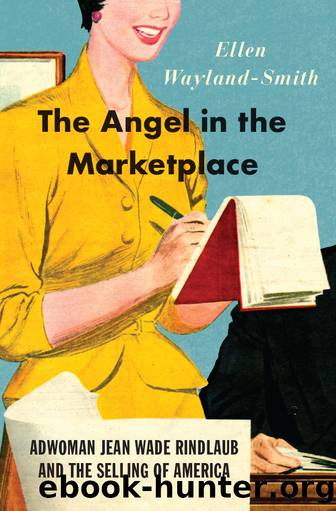The Angel in the Marketplace by Ellen Wayland-Smith

Author:Ellen Wayland-Smith [Wayland-Smith, Ellen]
Language: eng
Format: epub
Tags: HIS000000 History / General
Publisher: University of Chicago Press
âSentimentalism,â Ann Douglas writes of the nineteenth-century sanctification of the feminine virtues of home and hearth, âprovides a way to protest against a power to which one has already in part capitulated.â The mythic, sentimentalized figure of the maternal âangel in the houseâ gained such traction in nineteenth-century America because it provided a counterweight to the moral misdeeds of market society. Women who advocated for domestic virtues, like the Beecher sisters, were thus âin the position of contestants in a fixed fight: they had agreed to put on a convincing show, and to lose. The fakery involved,â Douglas concludes grimly, âwas finally crippling for all concerned.â26
Jean would not have described the face-off between the spheres as a fixed fight and would firmly have denied the charge of fakery. That there were losers in this arrangement, Jean knew. Her research taught her that the role of housewife, despite its rewards, also felt like a trap to many women. In her talk to Oneida executives in 1946, she convinced them that the modern young woman, aged eighteen to twenty-six, wanted nothing more than to get married, to have a home of her own. Yet Jeanâs polling uncovered a puzzle: âWhat do they hate to do most? . . . [They] hate to stick to a budget, to bake and mend and sew and dust and mop and hang curtains. Do you notice how many of these things they hate are things they do at homeâand yet, in spite of it all, theyâre tumbling over themselves to get in one.â27 Having noted this contradiction, Jean said nothing more about it. Perhaps she dropped it in to emphasize the sacrifices women were willing to make to get their man. Perhapsâgiven that her audience was all menâit was a humorous jab at that oh-so-contradictory yet ultimately lovable creature, Woman.
Again and again, the housewives she interviewed confessed boredom; anxiety; a dimly felt desire to âmake a differenceâ in the larger world, with no clear path to do so. In summarizing a study of womenâs magazine readership in 1949, Jean noted the key features of âMrs. Middle Majorityâ: âShe is a housewife,â Jean started off the list, âwith limited experience because her life is limited to a familiar, narrow routine and she lacks the background which would lead her to seek wider interests.â âShe is fairly unimaginative,â Jean specified, âbecause her way of life does not call for any originality or imagination; instead, discourages it.â And finally, most damningly, but noted with the cool neutrality befitting the tone of an office memo, âshe has a sense of futility because her life is pretty drab and monotonous.â28
But Jeanâs responsibility as an advertiser was not to spring women from their trap. It was to make the trap more comfortable. Advertising was a kind of ministry by which she could help wives and mothers âadjust,â to use the therapeutic vocabulary of the age, to their prescribed roles. And while she gently acknowledged that these roles could chafe, she never seriously questioned them.
Download
This site does not store any files on its server. We only index and link to content provided by other sites. Please contact the content providers to delete copyright contents if any and email us, we'll remove relevant links or contents immediately.
The Bullet Journal Method by Ryder Carroll(1496)
Doesn't Hurt to Ask by Trey Gowdy(1398)
The Concise Laws of Human Nature by Robert Greene(1219)
The 7 Habits of Highly Effective People by Stephen R. Covey & Sean Covey(1009)
HBR's 10 Must Reads 2021 by unknow(975)
Hook Point: How to Stand Out in a 3-Second World by Brendan Kane(927)
HBR's 10 Must Reads 2021 by Harvard Business Review(876)
The Job Closer by Steve Dalton(813)
Master of One by Jordan Raynor(808)
Don't Sweat the Small Stuff...and It's All Small Stuff by Richard Carlson(806)
100 Things Successful People Do by Nigel Cumberland(798)
Amazon Unbound by Brad Stone(776)
Primal Leadership by Daniel Goleman(775)
Declutter Your Mind: A step by step guide to learn to control your thoughts, stop worrying, relieve anxiety and eliminate panic attacks and negative thinking by Mia Chandler(745)
Lives of the Stoics by Ryan Holiday & Stephen Hanselman(719)
Coders at Work: Reflections on the craft of programming by Peter Seibel(658)
The Power of 100! by Shaun King(643)
Conflicted by Ian Leslie(642)
The Mechanism of Mind by Edward De Bono(638)
